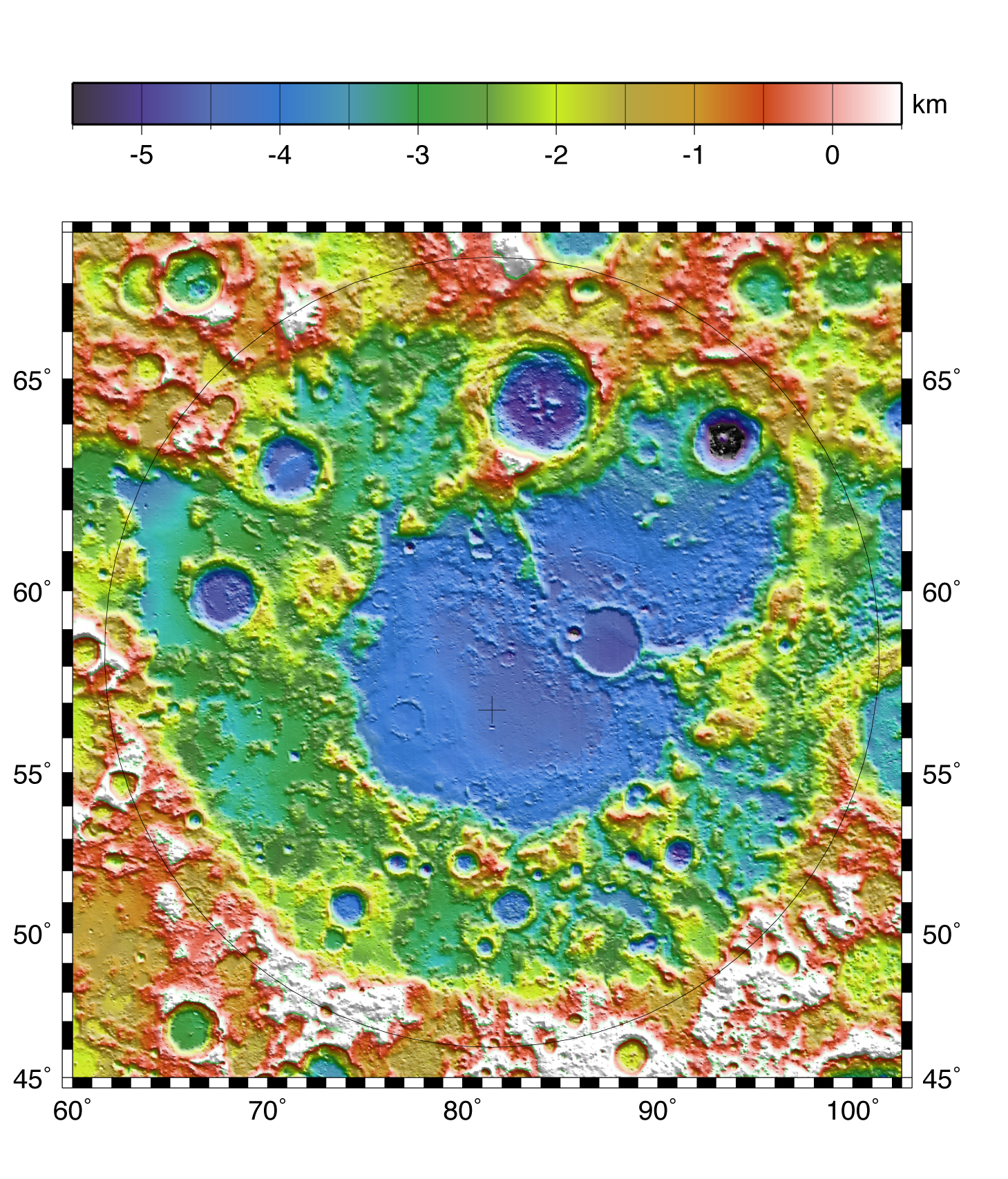
Humboldtianum Basin
Located along the northeastern limb of the Moon (centered at approximately 56.8 N, 81.5 E), Humboldtianum Basin is a region of interest for NASA's former Constellation Program. LOLA data show that the 650 Km diameter basin is more than 4.5 km deep. Humboldtianum Basin is estimated to have formed during the Moon's Nectarian Period, approximately 3.92-3.85 billion years ago. Many other multi-ring impact basins are also believed to have formed during this time period, including Crisium Basin.In the inner ring of Humboldtianum Basin is Mare Humboldtianum (Humboldt's Sea). LOLA data reveal the relatively smooth, flat floor of the mare. The younger mare is believed to have formed during the Late Imbrian, approximately 3.8-3.6 billion years ago. Also visible in the basin are smaller craters that were partially filled in by the mare lava. Mare Humboldtianum was named after explorer Alexander von Humboldt (1769-1859) and is one of only two maria named after people, the other being Mare Smythii named after British astronomer William Henry Smyth (1788-1865).
